Production process of 5000tpd clinker cement
2022-05-10
Production Process
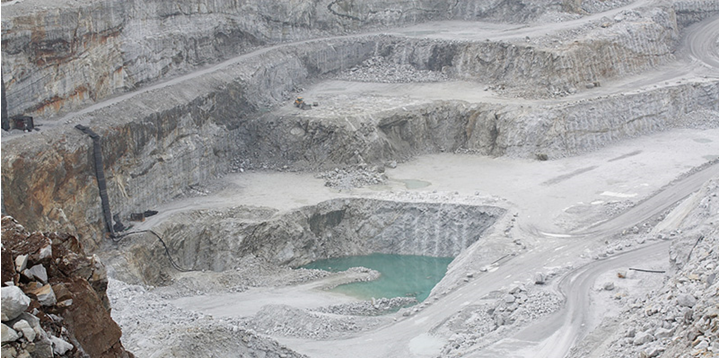
1. Limestone Mine
Limestone crushing adopts single-stage crushing. The limestone is poured into the receiving hopper by the belt, and fed into a heavy-duty double-rotor single-stage hammer crusher through a heavy-duty plate feeder of EBP2200-10. When the feeding particle size is ≤1000mm, When the discharge particle size is less than or equal to 25mm, the crushing capacity is 1200t/h. Since the raw mill system is planned to use the vertical mill production process, the incoming grinding particle size is required to be ≤80mm (≤85%), the crusher requires that the discharge particle size can be relaxed to ≤75mm, and the crushing capacity can be increased to 1500t/h. Heavy-duty plate feeder Feeding capacity≥1600t/h. The crushed limestone is sent to the limestone pre-homogenization yard by the belt conveyor.
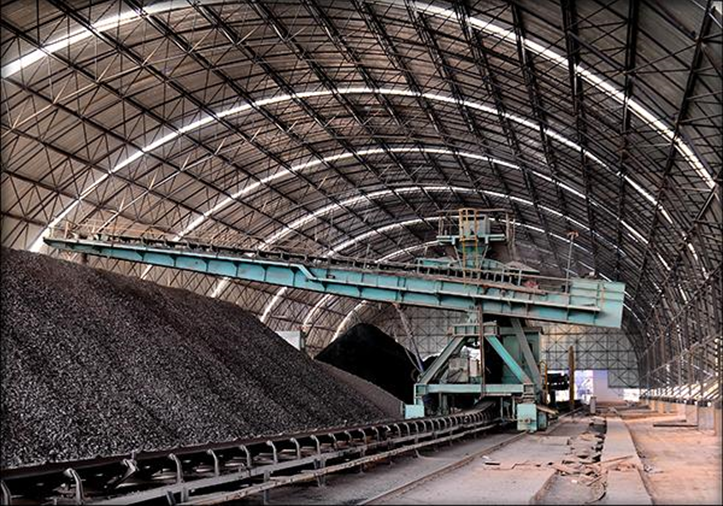
2. Limestone pre-homogenization yard
In order to homogenize and store limestone, a limestone pre-homogenization yard with a diameter of 90m is set up. The total storage yard is 52,000t, the effective storage is 47,000t, and the validity period is 7.4 days. One cantilever stacker is used for stacking, and the stacking capacity is normal. It is 600t/h, and the maximum can reach 800t/h. A bridge scraper reclaimer is selected for sampling. The reclaiming capacity is normally 450t/h, and the maximum can reach 550t/h. The homogenized limestone is sent to the conveyor belt conveyor. In the limestone warehouse of the raw material batching station.
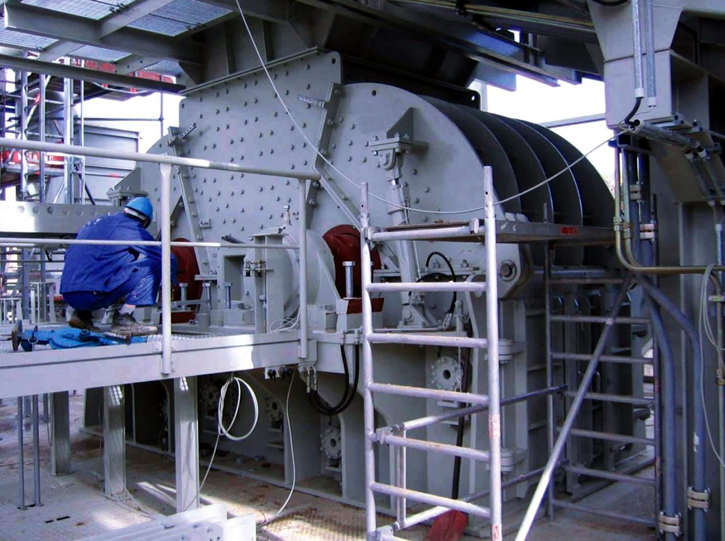
3. Sandstone crushing and conveying
The forklift shovels the sandstone in the sandstone yard into the hopper in front of the crusher. After the sandstone is screened, the small pieces are directly sent to the auxiliary raw material pre-homogenization yard by the belt conveyor, and the large pieces are crushed by the impact type hard material crusher. Afterwards, it is sent to the auxiliary raw material pre-homogenization yard by the belt conveyor for storage. When the incoming particle size is less than or equal to 600mm and the discharge particle size is less than or equal to 25mm, the crusher capacity is 90t/h.
4. Auxiliary raw material pre-homogenization yard and transportation
The yard is a 30×180m long pre-homogenization yard. Clay, sandstone and sulfuric acid slag are stacked by cantilever stacker in layers, and reclaimed by side reclaimer. The extracted clay, sandstone and sulfuric acid slag are respectively sent to the raw material mixing station by the belt conveyor. The stacking capacity of the stacker is 250t/h, and the reclaiming capacity of the reclaimer is 150t/h.
5. Raw material batching station
The raw material distribution station is equipped with 4 round warehouses, 1 φ10×24m warehouse to store limestone, and 3 φ8×20m warehouses to store clay, sandstone and sulfuric acid slag respectively. Each material is unloaded from each warehouse in proportion by the quantitative feeder, and sent to the raw material grinding mill by the belt conveyor. There is an electromagnetic iron remover on the grinding belt conveyor to remove possible iron parts in the raw materials. There is a metal detector at the head of the belt conveyor to detect whether there are iron parts left in the raw material to ensure that the vertical mill is not damaged.
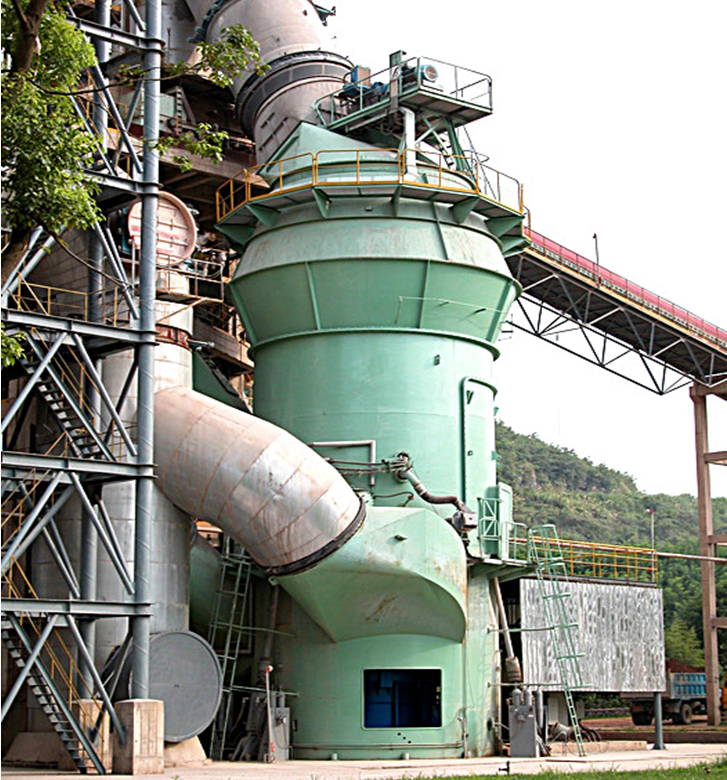
6. Raw material grinding and waste gas treatment
The raw material grinding adopts a vertical mill system, the production capacity of this system is 400t/h, the fineness of the raw material is 80um sieve residue <12%, the comprehensive moisture content of the grinding material is <8%, and the comprehensive moisture content of the grinding material < 0.5%.
The raw materials from the batching station are sent to the vertical mill for drying and grinding through the belt conveyor and the inlet lock air valve. The coarse powder is returned to the mill for grinding again. The fine powder is sent to the raw meal homogenization silo together with the kiln dust collected from the electrostatic precipitator and the humidification tower through the elevator and the air conveying chute as the finished product. When the raw material mill stops grinding, the kiln dust can be transported to the raw material feeding kiln system.
The waste gas discharged from the preheater at the kiln end is sent to the raw material mill as a drying heat source by a high temperature fan, and the other part of the waste gas is sent to the humidification tower for cooling and tempering, and then enters the electrostatic precipitator together with the raw material mill waste gas for purification and then discharged into atmosphere.
The drying medium uses the exhaust gas discharged from the preheater. Part of the exhaust gas from the mill is circulated into the mill after the powder separator and cyclone separator, and the remaining part is sent to the waste gas treatment electric precipitator. The normal emission concentration of the flue gas treated by the electrostatic precipitator is less than or equal to 50mg/m3 (standard) When the moisture content of the dust collected by the humidification tower is too large, the screw conveyor under the humidification tower is reversed, and the moisture collected by the humidification tower is reversed. The material is discharged from the other end.
The raw material grinding system is equipped with an automatic continuous sampling device. The sample is detected by X-fluorescence analyzer and the mixing ratio of various raw materials is automatically controlled and adjusted by the computer, so as to adjust the raw material ratio and ensure the qualified chemical composition of the milled raw material. with stability. The raw material grinding system is equipped with an auxiliary hot blast stove as a backup heat source. When the raw material mill is not running, the exhaust gas from the kiln tail is cooled and tempered by the humidification tower, and then directly enters the electrostatic precipitator for purification. The normal emission concentration of the flue gas treated by the electrostatic precipitator is ≤50mg/m3 (standard).
7. Raw meal homogenization and kiln feeding system
A raw meal homogenization warehouse with a diameter of 22.5×52m is set up, and the effective storage of the warehouse is 17000t. The silo is a central cone-type multi-flow continuous homogenization silo, which makes the incoming raw materials arranged in layers. There is an inflatable chute at the bottom of the silo, which is supplied by a Roots blower. The annular space around the conical shape of the bottom of the silo is divided into six large discharge areas and 12 inflatable areas. Roots blowers take turns to inflate each area. The material in the upper part of the inflatable area falls to form a funnel shape, and at the same time, multiple layers of raw materials and raw materials are cut. Multiple streams of material are formed at the discharge port, and the material is discharged simultaneously through the two top discharge ports in the center of the warehouse in turn. The raw meal out of the warehouse is sent to the raw meal feeding and measuring bin through the flow control valve. The lower part of the bin is equipped with a load cell and an inflatable device inside, which integrates the functions of mixing, weighing and feeding. The raw meal out of the mixing bin is measured by a solid flow meter and sent to the kiln tail bucket elevator by an air conveying chute.
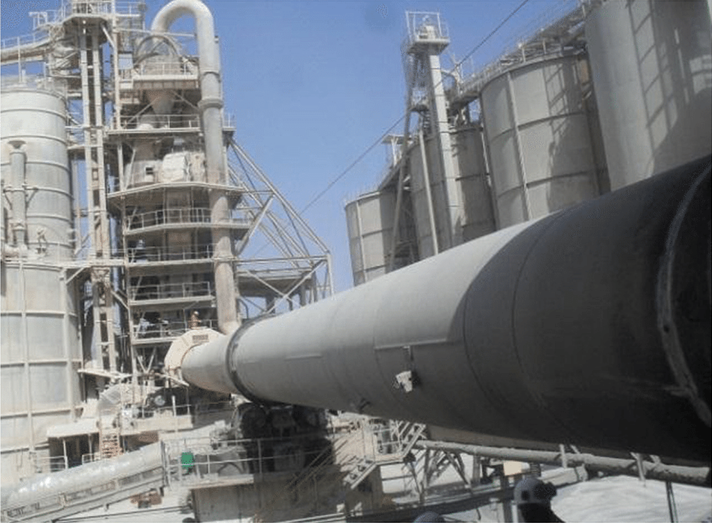
8. Clinker calcination system
The clinker firing system is composed of rotary kiln, dual series 5-stage low pressure loss cyclone preheater and NDF decomposition furnace. The daily output of clinker is 4500 tons, and the heat consumption of clinker is 3178kJ/kg. clinker.
The sintering process is briefly described as follows: the raw material from the raw material homogenization warehouse is lifted by the bucket and sent to the connecting air duct of the C1 and C2 cyclone cylinders, and is brought into the C1 cylinder by hot air, and the material enters C1, C2, and C3 sequentially from top to bottom. , C4, decomposition furnace, C5 cyclone into the kiln. The hot air flows from bottom to top and finally enters the high temperature fan through the C1 tube.
Part of the hot air from the high-temperature fan enters the humidification tower, the other part is used as the drying heat source for the raw meal mill, and finally enters the kiln tail electric precipitator and is discharged into the atmosphere through the chimney. Clinker calcination adopts a φ4.8×72m rotary kiln with three-speed support, the slope is 3.5%, and the rotation speed is 0.35~3.5r/min. The kiln head and precalciner are equipped with multi-channel pulverized coal burners.
In the 5-stage cyclone preheater, except for the C1 tube, the rest are all low-pressure loss cyclone tubes. Under the condition of keeping the separation efficiency unchanged, the resistance of the cyclone tube itself can be reduced by 40%. The resistance of the entire pre-decomposition system including the precalciner is controlled below 4800Pa. The ratio of coal used in the kiln and the calciner is 40%:60%, and the temperature of the exhaust gas from the preheater is 320-350℃.
The easy-to-block parts of the preheater are provided with shovel cleaning holes and air cannons, and the cone parts of the cyclones at all levels are equipped with a double-ring compressed air purging system. Through the control program, it can realize timing automatic purging, according to the blockage signal, it can blow and clear the blockage by itself. When the blowing is invalid, it will automatically alarm.
9. Clinker cooling
Clinker cooling adopts a controllable airflow grate cooler, and the temperature of the clinker out of the cooler is ambient temperature +65℃. In order to crush large pieces of clinker, a hammer crusher is installed at the outlet of the cooler to ensure that the particle size of the clinker out of the cooler is less than or equal to 25mm. The cooled clinker is sent to the clinker storage warehouse by the chain bucket conveyor.
Part of the gas discharged from the cooler enters the kiln as the secondary air at the kiln head, and part is sent to the kiln tail calciner through the tertiary air duct. The heat source is dried, and the rest are discharged into the atmosphere after being purified by the electrostatic precipitator. The normal emission concentration of exhaust gas is ≤50mg/m3 (standard).
10. Clinker storage and transportation, clinker bulk
Set up a φ45m clinker tent warehouse, the storage capacity is 52500t, the effective storage capacity of the warehouse is 45000t, and the effective storage period is 10 days. The characteristics of the library are low investment and good heat dissipation effect, which is conducive to the improvement of clinker strength.
The cooled clinker is sent to the top of the clinker tent warehouse by the chain bucket conveyor, and falls into the center cylinder of the warehouse. There are 13 unloading points at the bottom of the silo, which are unloaded into 3 heat-resistant belt conveyors through the unloading equipment, and then merged into the same belt conveyor to be sent to the cement batching station.
The bulk clinker is loaded directly by the loader.
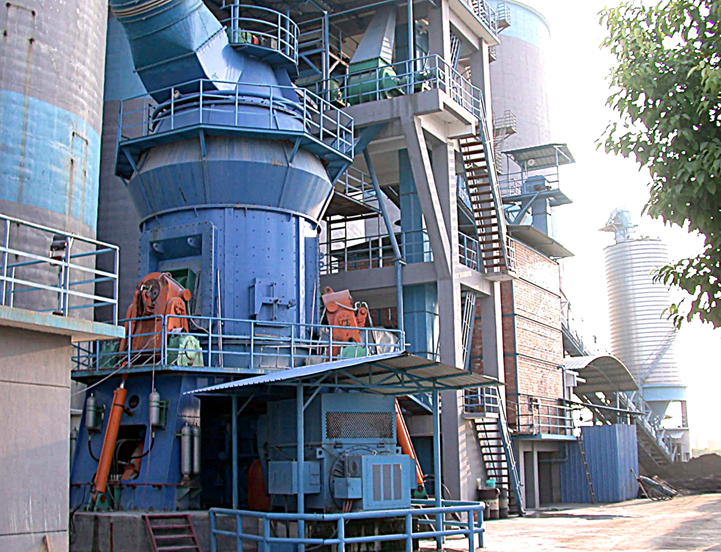
11. Coal pre-homogenization yard and pulverized coal preparation
The raw coal is transported into the factory by car or train, stored in the open coal yard, unloaded into the pit by the loader, sent to the raw coal pre-homogenization yard by the plate feeder and belt conveyor, piled into two piles, and picked up by the bucket wheel. The feeder is sent to the belt conveyor into the coal mill grinding head bin.
The coal mill adopts a vertical mill system. When the moisture of the raw coal is ≤8%, the moisture of the pulverized coal is ≤1%, the particle size of the raw coal is ≤70mm, and the fineness of the pulverized coal is 80µm and the remaining 10% is screened, the system output is 38t/h.
The coal mill is set at the kiln head, and the waste gas of the grate cooler is used as the drying heat source. The raw coal is metered by the quantitative feeder under the raw coal bunker and fed into the mill, and the dried and pulverized coal enters the bag filter together with the waste gas. , the collected pulverized coal is sent to the pulverized coal bins of the kiln and the decomposition furnace respectively through the screw conveyor. The exhaust gas purified by the bag filter is discharged into the atmosphere, and the normal emission concentration of the flue gas is ≤30mg/Nm3.
There is a pulverized coal metering and conveying device under the pulverized coal silo, and the pulverized coal can be accurately sent to the kiln head and the decomposition furnace through this device.
The pulverized coal preparation system is equipped with strict safety measures, such as explosion-proof valve, CO detector device, CO2 automatic fire extinguishing system, fire water system, etc.
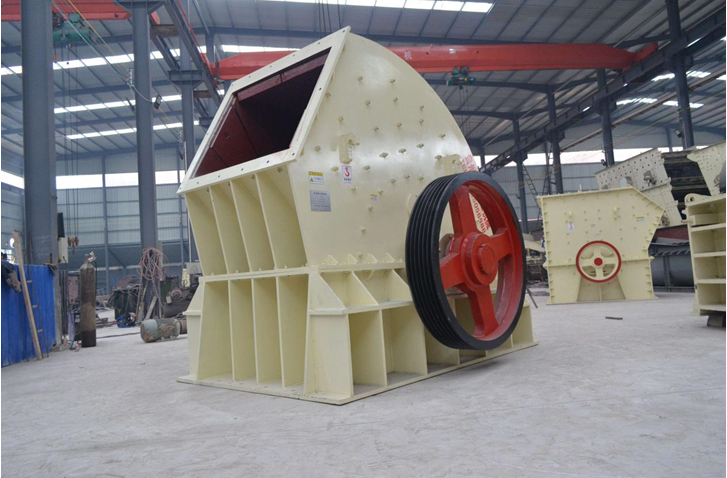
12. Gypsum crushing and conveying
The gypsum is transported into the factory by truck, stored in the open yard, and then fed into the unloading pit by the loader, and fed into a heavy hammer crusher by the medium plate feeder. The crushed gypsum is sent to the cement batching station by belt conveyor and elevator.
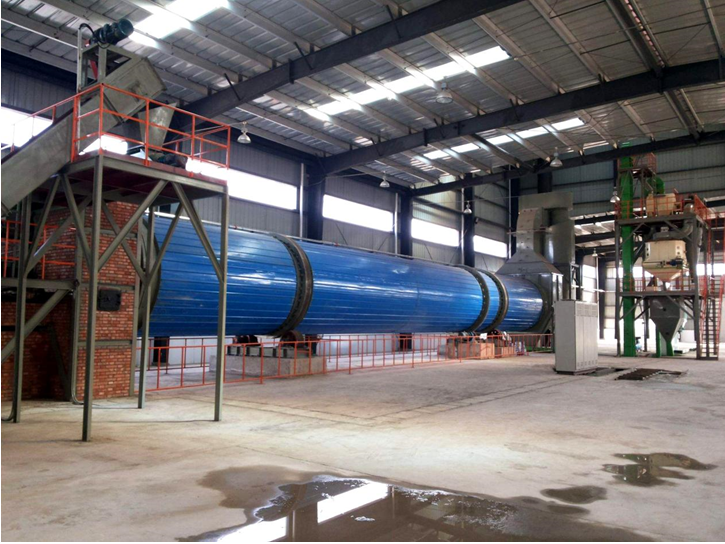
13. Slag drying and conveying
It is planned to use a Φ3.6×32m dryer for drying. When the initial moisture is 12% and the final moisture is <1.5%, the capacity of the dryer is 100t/h, and a set of GXDF type boiling hot blast stove is also equipped. The dried slag is sent to the cement batching station by belt conveyor and elevator.
14. Cement batching station
There are 4 batching warehouses of φ8×20m in the cement batching station, of which 2 store clinker with a reserve of 1300×2=2600t and a storage period of 12.5h; 1 store slag with a reserve of 1000t and a storage period of 1.5 days; 1 One store of gypsum has a reserve of 1260t and a storage period of 3.2 days; two φ12×22m fly ash warehouses have a reserve of 2×1800t and a storage period of 1.8d. Each material is unloaded from the bottom of the silo by the speed-adjusting quantitative feeder produced by the imported technology according to a certain proportion, and the matched material is sent to the cement mill through the belt conveyor and the air-locking air valve.
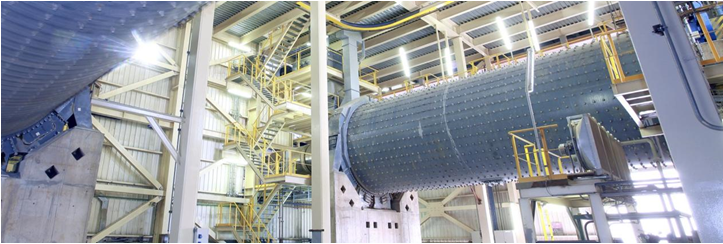
15. Cement grinding
The cement grinding adopts 2 sets of φ2000×1500mm roller press + 2 sets of φ4.2×11m ball mill system, equipped with 2 sets of V-type powder separator and 2 sets of improved powder separator. When the particle size of the grinding material is less than or equal to 25mm, and the specific surface area of the cement is 320-350m2/kg (for grinding P.042.5 ordinary Portland cement), the production capacity of the system is 340t/h.
The mixed materials in the cement batching station are sent to the V-type powder separator through the bucket elevator of the belt conveyor, and the selected coarse powder is fed to the roller press. After crushing, the bucket elevator is sent to the V-type powder separator; The dust-laden gas from the type powder separator is processed by the cyclone dust collector, and then the coarse powder is fed to the ball mill, and the waste gas enters the improved type powder separator. The pulverized materials are sent to the improved powder separator through the mill tail bucket elevator. The coarse powder selected by the powder separator is sent back to the grinding head of the ball mill through the air conveying chute, and the fine powder enters the air box with the air flow from the powder separator. Pulse bag dust collector, the collected cement products are sent to the cement storage system through the air conveying chute. The purified gas of the air box pulse bag dust collector is discharged into the atmosphere through the exhaust fan.
16. Compressed air station
There is a compressed air station, a total of 5 sets of 40m3/min screw air compressors and refrigerated air drying devices, which can provide compressed air with a pressure of 0.8MPa, one of which is a 40m3/min air compressor for backup. The compressed air station provides air source for pulse bag dust collectors, various pneumatic devices and air cannons.
1.1.19 Low temperature waste heat power generation system
The exhaust gas (about 350°C) exiting the first-stage cylinder at the kiln end is reduced to about 230°C after heat exchange by the SP furnace. The waste gas from the grate cooler at the kiln head (about 350°C) is settled in the settling chamber (pre-dust collector) and then enters the AQC furnace. After heat exchange, it enters the dust collector to purify and meets the standard, and then joins with the waste gas at the tail of the clinker cooler. into the atmosphere through the chimney.
Our professional team will reply to you as soon as possible.
Phone / Whatsapp / Wechat